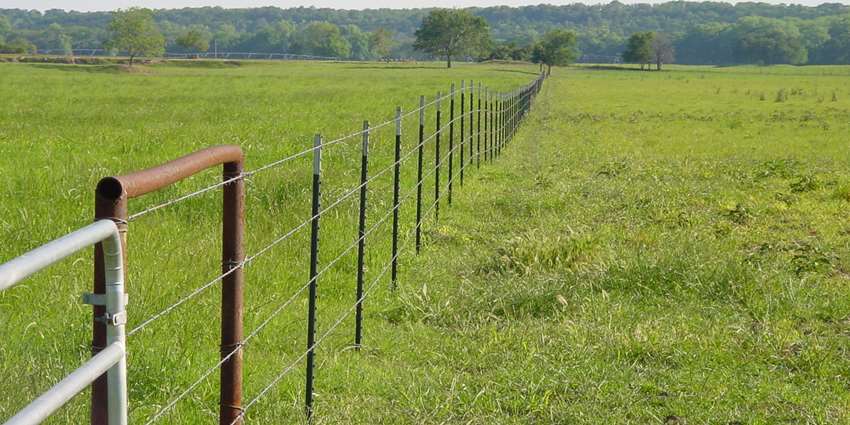Fencing for grazing management is an agricultural BMP that can impact water quality. (TWRI photo.)
A team of Texas Water Resources Institute (TWRI) and Texas A&M AgriLife researchers recently published a nationwide systemic review of best management practices (BMPs) for nonpoint source pollutant reduction and found that BMPs effectively reduced common pollutants, including fecal indicator bacteria and total nitrogen.
“We saw a need for more robust studies synthesizing all of the data on different types of best management practices that both agricultural and urban stakeholders can use, and the effectiveness of those practices,” said Michael Schramm, TWRI research specialist and lead author of the study, published in Frontiers in Water.
What is nonpoint source pollution, and do BMPs reduce it?
Nonpoint source pollution is all water pollution that does not come from point sources. Point sources are regulated, such as end-of-pipe outlets for wastewater or stormwater.
Science-based BMPs for reducing nonpoint source pollution in urban and suburban environments include constructed wetlands, bioretention cells, rain gardens, rainwater harvesting and permeable pavements. Research-backed farm and ranch BMPs include prescribed and rotational grazing, filter strips, soil conservation, vegetated buffers along streams and creeks, reduced tillage, supplemental water locations for livestock, and nutrient management.
The research team identified studies on these practices that were high-quality assessments, including journal articles, white papers and technical reports from municipalities and organizations. They did not restrict the study to peer-reviewed research, Schramm said, because a systemic review of a wider cross-section of professional water research would produce a broader look at BMP effectiveness.
After conducting the systemic review, their results showed that BMPs on average were effective at reducing fecal indicator bacteria, total nitrogen, total phosphorus, and total suspended sediment concentrations.
Study coauthors included Duncan Kikoyo, Ph.D., Texas A&M AgriLife Research scientist in the Texas A&M Department of Biological and Agricultural Engineering, Shubham Jain, doctoral student in Texas A&M’s Water Management and Hydrological Sciences program, and Janelle Wright, TWRI student technician and Texas A&M urban planning master’s student.
There were not enough studies conducted in enough regions across the United States to capture the underlying variability in climate, soil and other conditions that could impact BMP performance, and this analysis also identified those areas of further research needed, he said.
More studies needed on BMP effects
Schramm said that the team originally planned to focus their analysis on Texas, but there were not enough published studies on BMP impacts in the state. They then expanded the scope of the study.
“The water quality research field needs more data from more studies looking at these practices in various states,” he said. “We don’t expect the same BMPs to work the same way in different places. Regional decision-makers and landowners need regional data to help improve water quality.”
He is interested in coordinating future large-scale efforts with multiple universities or institutions simultaneously conducting similar BMP study designs that could then be compared across regions.
This research was funded in part by the Texas State Soil and Water Conservation Board.
Read the full article to learn more.



